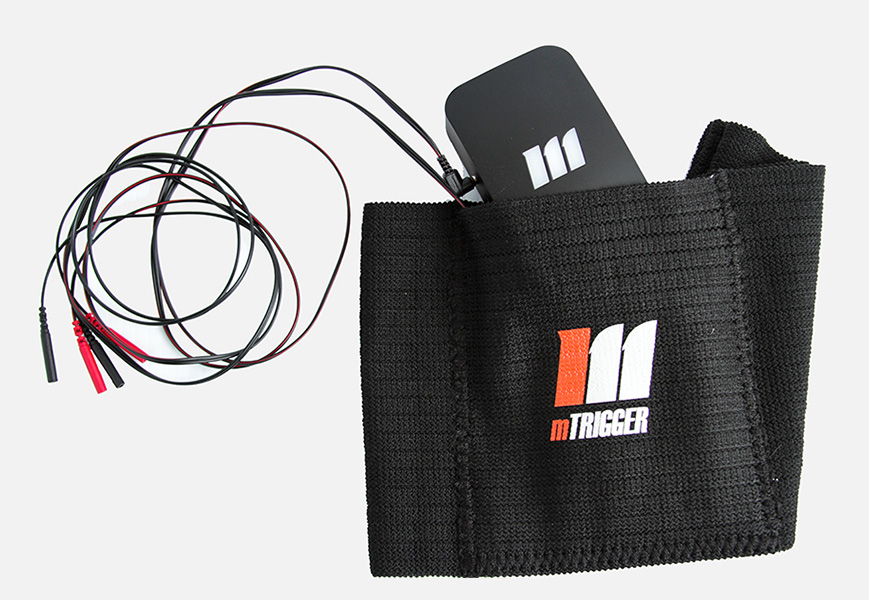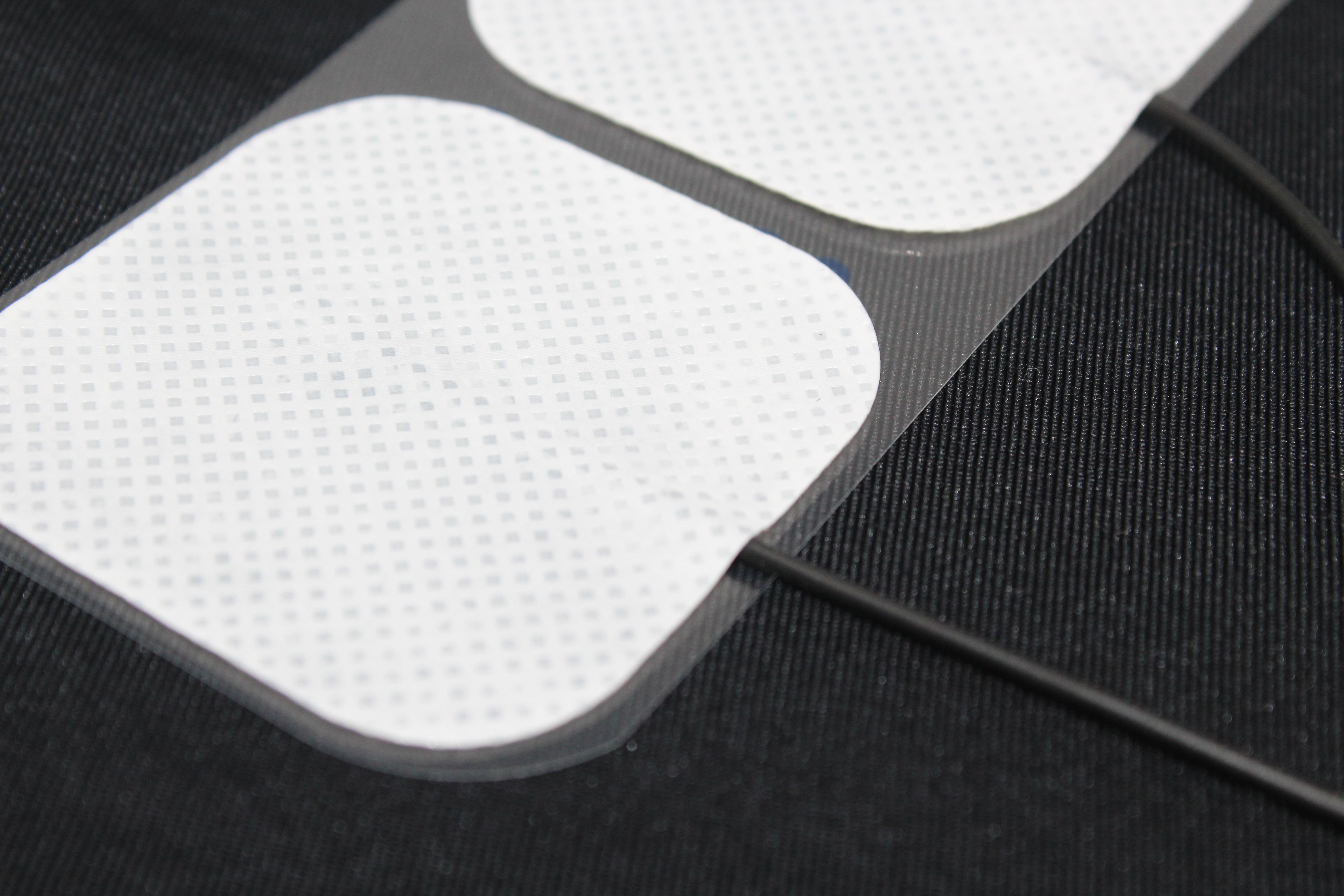By Russ Paine, PT | Originally featured on MikeReinold.com
I use biofeedback on virtually every knee patient that has decreased neurological EMG output. As previously mentioned, we are able to use the mTrigger Biofeedback System to provide a side to side assessment of EMG activity.
This information is also very educational and motivational to the patient as they can see the actual deficit via visual EMG numbers between normal and involved sides.
Cycles of 10 seconds on and 10 seconds off are utilized during the 10 minute biofeedback session. My instructions to the patient for quadriceps re-education are to “tighten your muscle and force your knee straight”. Progress is continued to be monitored on a weekly basis to measure the change in EMG activity, as shown using the biofeedback application.
The mTrigger Biofeedback device that has an amplifier that sends the measured EMG activity via a Bluetooth signal to a mobile device (Android or iOS) with the downloaded software application.
This mTrigger is available for home use as well as clinical use. Patient reported motivation using this type of biofeedback product is very high as they can actually visualize their intensity of muscle contraction when performing home exercise programs. There seems to be an interesting psychological connection between the use of one’s personal smartphone or tablet and engagement / muscle activity.
Lack of extension of the knee has been shown to have an adverse effect of knee function. Loss of extension alters the gait pattern and can produce abnormal stresses to the patellofemoral joint. Due to a lack of quadriceps control, many quad inhibited patients will ambulate with a flexed knee gait pattern.
The use of biofeedback can be used to combat this common malady often associated with post-op care of the knee. Lacking quad control, patients are unable to eccentrically control the knee flexion moment that occurs during single limb balance. A quad inhibited patient will assume this flexed knee position because they “know” the position of the knee during single limb balance.
This sets up the knee for a co-contracted state and presents as muscle splinting until normal muscle tone and function are restored. This muscle splinting will continue to exacerbate the lack of extension in the knee. Biofeedback can be very effective at addressing this issue.
With muscle splinting, we want to teach the patient to relax the hamstring muscle during knee extension stretching, thus negating the effect of a contracting hamstring muscle. The patient is placed in a prone position, with both patella over the edge of the table. Electrodes are placed over the hamstring muscle. Unlike the inhibited quadriceps muscle where we are trying to elicit a stronger contraction, the biofeedback unit is now used for relaxation purposes. As the patient uses the relaxation mode of the unit and learns to control the overly active hamstring contraction, immediate increase in passive knee extension is observed.
This position is maintained for a 10 minute period. Once the patient has “learned” to control the hamstring hyperactivity, a light weight may be applied for the 10-minute period to produce a low-load long-duration stretch. Change in knee extension can be measured using the heel height difference measurement technique. Dale Daniel described this measurement and showed that 1cm of HHD = 1 degree of flexion contracture.
A note from Mike Reinold: That’s a great example of how you would use biofeedback to work reducing muscle activity. It’s not always used to increase activity. Another way we use it is to use both channels together on 2 different muscle groups. Imagine doing a bird dog or glute bridge with the pads on the glutes and low back. You would focus on performing the drill with high glute activity and low back activity. It’s pretty neat.
|
Approx. 5 min. read
Hungry for more? Learn about the science behind mTrigger Biofeedback, or explore more dual channel applications!








Leave A Comment